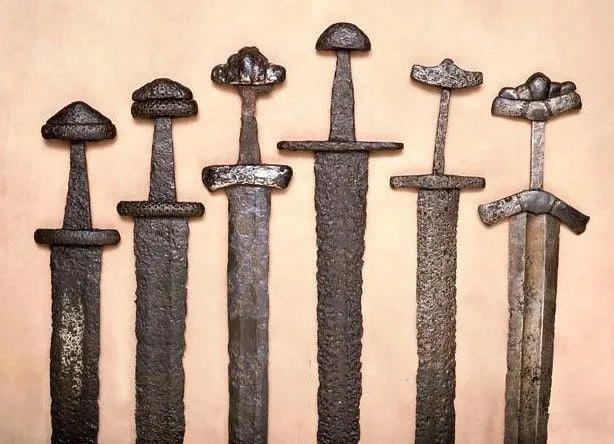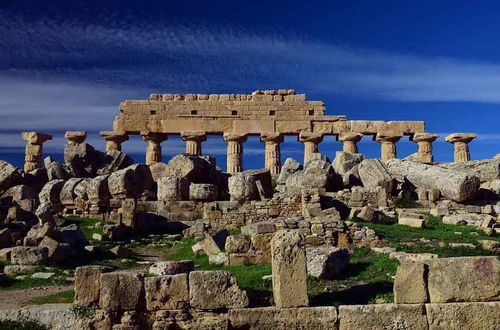FOR AGES 7 YEARS TO 11 YEARS
Image © Pikwizard.
The Iron Age began around the year 500 BCE, and in Britain, it arrived around 800BCE. It ended in 43 CE. This was the era during which the use of iron to build tools and weapons became popular. The Iron Age came after the Stone Age, and took place directly after the Bronze Age, when it was discovered that iron was a much harder material than stone or bronze, which made it a better material to use when constructing objects, including weapons. There were many different weapons that were used during this time. The Iron Age was also the time period when the Celts lived in Britain.
The Iron Age is an important part of the National Curriculum, and children will begin learning about it in Year 3. These facts and activities will boost any child's knowledge and confidence on this fascinating historical topic.
Why not take a look at our wonderful guide to Iron Age weapons below?
Many different types of weapons and iron tools were used during the Iron Age in Britain, and across the world:
Daggers were very common Iron Age weapons, and before this era, no iron daggers had existed. The Iron Age dagger was often used during battles, but it could also be used to hunt for food, making it a very useful tool. The Iron Age dagger was also very sharp. It was shorter than a sword, making it an easy weapon to carry.
The Iron Age shield was usually oval or round. In places like Turkey, the Iron Age shield was made from iron but some Iron Age people in Britain would still have used a wooden or bronze shield. The Iron Age shield was used for protecting the body during battles, which were frequent in Britain at this time, as the different Celtic clans (groups) fought against one another. One famous example of an Iron Age shield is the Battersea Shield, which is a bronze shield with beautiful designs on the front.
The spear was another commonly found weapon during the Iron Age. It was used to hunt animals for food and also as a deadly long range weapon during battles. Iron Age spears were often made of wood, whilst the triangular tips (spearheads) were made with iron in order to cause as much harm as possible. Spears were fairly easy to make.

Image © Wikimedia Commons
The sword is another example of an Iron Age weapon. Iron swords were used in battle, and they were less curved than older ones. They also tended to be shorter than previous swords. However, at the end of the Iron Age there was a revival of longer swords, which were used when riding on horseback during battles. Iron Age swords were usually kept in sheaths, which are sword-holders carried on a person's back.
Javelins were also popular weapons. They were similar to spears, except they were thrown during battle. They were often hurled from wooden chariots, where the most important warriors would ride in during wars.
Axes were common farm tools that also served as weapons. In Europe, this era saw the development of the first battle axes - axes which were specially designed for war. Axes changed quite a lot during the Iron Age. Before this period, axe heads were fairly slim and short, but they became wider and larger when they were made with iron.
Did You Know? In Iron Age Britain many people lived in hill forts to keep them safe from being attacked with these dangerous iron weapons. Other Iron Age weapons include knives and lances.
We know about these weapons because archaeologists have discovered them in different places.
In Britain, Iron Age spearheads, swords and other weapons were often offered by the Celtic people as sacrifices to the Celtic gods. They were often thrown into sources of water, which is where many weapons from this period have been found. For example, the famous Battersea Shield was found in the River Thames. It is thought that this was a sacrifice to one of the 400+ Celtic gods and goddesses. Many weapons, including spearheads, have also been found at Lake Cerrig Bach in Wales, where more than 150 weapons from this period have been discovered.
The Celts also buried weapons with their owners once they had died. Being buried with precious objects, including weapons, was a symbol that the person being buried was wealthy and powerful. Sometimes weapons were deliberately bent out of shape before they were buried.
Did You Know? The Celtic people who lived in Britain at this time often decorated their shields with important religious symbols.

Image © Pikwizard
Check out these creative and educational ideas to help facilitate your child's learning:
If you have artistic children who love crafts, they could try making their very own weapons out of cardboard, inspired by this period. Making a shield inspired this historic era is an especially fun activity as it is simple, and your kids will have a great time decorating it.
There are also many online videos for primary school children that show and describe weapons from this period. Watching these with your child will make for an engaging activity.
Read The Disclaimer
At Kidadl we pride ourselves on offering families original ideas to make the most of time spent together at home or out and about, wherever you are in the world. We strive to recommend the very best things that are suggested by our community and are things we would do ourselves - our aim is to be the trusted friend to parents.
We try our very best, but cannot guarantee perfection. We will always aim to give you accurate information at the date of publication - however, information does change, so it’s important you do your own research, double-check and make the decision that is right for your family.
Kidadl provides inspiration to entertain and educate your children. We recognise that not all activities and ideas are appropriate and suitable for all children and families or in all circumstances. Our recommended activities are based on age but these are a guide. We recommend that these ideas are used as inspiration, that ideas are undertaken with appropriate adult supervision, and that each adult uses their own discretion and knowledge of their children to consider the safety and suitability.
Kidadl cannot accept liability for the execution of these ideas, and parental supervision is advised at all times, as safety is paramount. Anyone using the information provided by Kidadl does so at their own risk and we can not accept liability if things go wrong.
Kidadl is independent and to make our service free to you the reader we are supported by advertising.
We hope you love our recommendations for products and services! What we suggest is selected independently by the Kidadl team. If you purchase using the buy now button we may earn a small commission. This does not influence our choices. Please note: prices are correct and items are available at the time the article was published.
Kidadl has a number of affiliate partners that we work with including Amazon. Please note that Kidadl is a participant in the Amazon Services LLC Associates Program, an affiliate advertising program designed to provide a means for sites to earn advertising fees by advertising and linking to amazon.
We also link to other websites, but are not responsible for their content.
Was this article helpful?



Browse Category



We’ll send you tons of inspiration to help you find a hidden gem in your local area or plan a big day out.



Check your inbox for your latest news from us. You have subscribed to:
Remember that you can always manage your preferences or unsubscribe through the link at the foot of each newsletter.